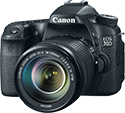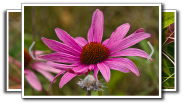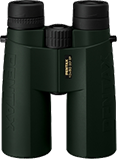recumbent ground crab spider
(Xysticus auctificus)
Conservation • Description • Habitat • Biology • Distribution • Taxonomy
|
|
||||||||||||||
Description |
Recumbent ground crab spider is a small ground crab spider. It occurs in the United States and southern Canada east of the Rocky Mountains. Adultsd are active in spring and early summer. The male is about ⅛″ (3.50 mm) in length. The body is hard and crab-like in appearance. It is reddish brown to orange with fine black lines. The plate (carapace) covering the front part of the body (cephalothorax) is slightly longer than wide. When viewed from above, it is smoothly rounded on the sides. When viewed from the side it is highest near the front and drops down toward the back near the base of the third pair of legs. The rear of the carapace is overhung by the abdomen. Near the rear margin there is a small black spot in the middle (median spot) and a similar but larger spot on each side (lateral spots). On each side, a whitish line extends backward from between the PME and PLE, joining in a broad arc at the median spot. There are eight eyes arranged in two curved rows of four. The front (anterior) row is curved forward and the rear (posterior) row is curved backward. The lateral eyes are larger than the median eyes and are on low raised projections (tubercles). The anterior median eyes (AME) are closer to the anterior lateral eyes (ALE) than to each other. The posterior median eyes (PME) are closer to each other than to the posterior lateral eyes (PLE). The median ocular area (MOA), the area defined by the middle four eyes, is broader than long and slightly narrowed in front. The plate on the face above the mouth (clypeus) is armed with several long spines. The jaws (chelicerae) are small and have no teeth. The abdomen is large, broadly oval, widest toward the rear, and flattened above. There are three pairs of large dark spots. They are separated in the middle by a broad pale stripe, and separated from each other by narrow, rearward-curved bands. The legs are long, stout, and pale reddish brown, with minute dark speckling near the base. The first and second pairs of legs are the longest. They are strong, spiny, and nearly equal in length. They are normally held out and forward, crab-like. This is the feature that gives the family Thomisidae its common name. The third and fourth pairs are shorter and nearly equal in length. The last part of each leg (tarsus) has two claws at the end but these are not visible without magnification. The tarsi on all legs do not have a brush of hairs (scopula) on the underside, and there is no tuft of hairs (claw tuft) at the end on any leg. The female is larger, about 3⁄16″ (5.50 mm) in length. The overall coloration is paler. |
Size |
Female Body Length: about 3⁄16″ (5.50 mm) Male Body Length: about ⅛″ (3.50 mm) |
Web |
| No web |
Similar Species |
Habitat |
|
Biology |
Season |
Spring and early summer |
Behavior |
Adults are slow moving, and they rely on ambush to capture their prey. When the legs are held out to the side the spider is able to walk forward, backward, or sideways (laterigrade). The female does not build webs, snares, or retreats. To protect its egg sac it will fold over the edge of a leaf and secure it with silk. |
Life Cycle |
|
Food |
Insects and other spiders |
Distribution |
||
|
Sources |
|
| 2/28/2025 | ||
Occurrence |
||
|
||
Taxonomy |
|
Class |
Arachnida (arachnids) |
Order |
|
Suborder |
Araneomorphae (typical spiders) |
Infraorder |
Entelegynae |
Superfamily |
Thomisoidea (crab and running crab spiders) |
Family |
Thomisidae (crab spiders) |
Subfamily |
Thomisinae |
Tribe |
Coriarachnini |
Genus |
|
Subordinate Taxa |
|
|
|
Synonyms |
|
Xysticus maculatus Xysticus trimaculatus |
|
Common Names |
|
recumbent ground crab spider |
|
Glossary
Carapace
The hard, upper (dorsal), shell-like covering (exoskeleton) of the body or at least the thorax of many arthropods and of turtles and tortoises. On crustaceans, it covers the cephalothorax. On spiders, the top of the cephalothorax made from a series of fused sclerites.
Cephalothorax
The front part of the body of various arthropods, composed of the head region and the thoracic area fused together. Eyes, legs, and antennae are attached to this part.
Chelicerae
The pair of stout mouthparts, corresponding to jaws, in arachnids and other arthropods in the subphylum Chelicerata.
Clypeus
On insects, a hardened plate on the face above the upper lip (labrum).
Tarsus
On insects, the last two to five subdivisions of the leg, attached to the tibia; the foot. On spiders, the last segment of the leg. Plural: tarsi.
Tubercle
On plants and animals: a small, rounded, raised projection on the surface. On insects and spiders: a low, small, usually rounded, knob-like projection. On slugs: raised areas of skin between grooves covering the body.
Visitor Photos |
||
Share your photo of this arachnid. |
||
This button not working for you? |
||
Alfredo Colon |
||
 |
 |
|
MinnesotaSeasons.com Photos |
||
|
||
|
||

Slideshows |
|

Visitor Videos |
||
Share your video of this arachnid. |
||
This button not working for you? |
||
|
Other Videos |
||
|

|
Created: 2/28/2025 Last Updated: © MinnesotaSeasons.com. All rights reserved. |


